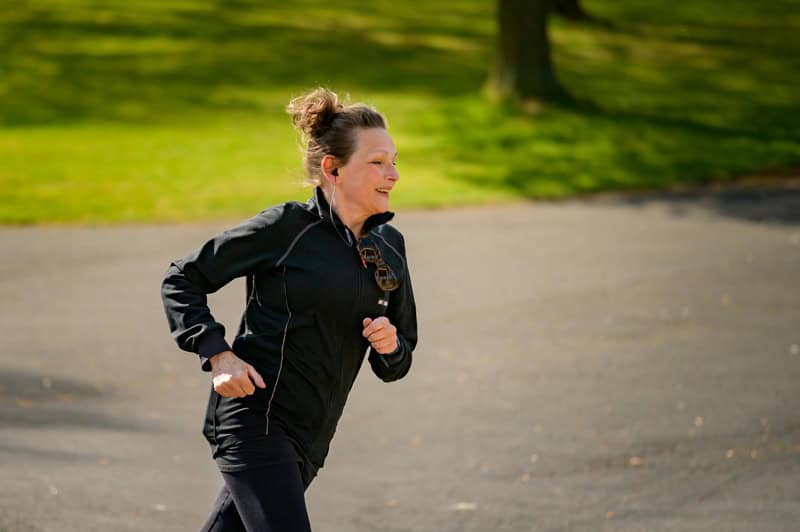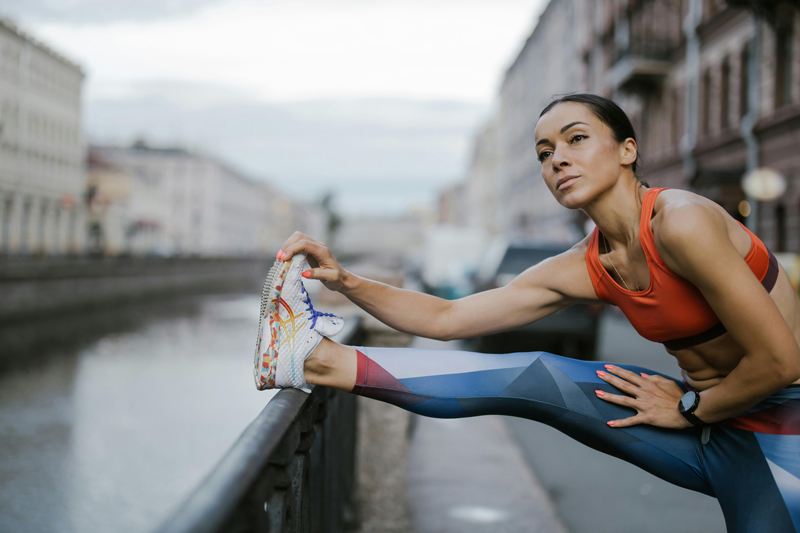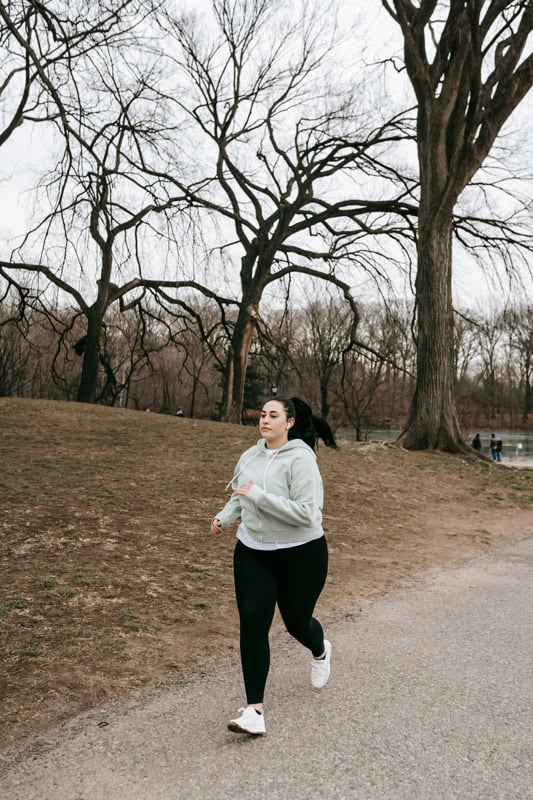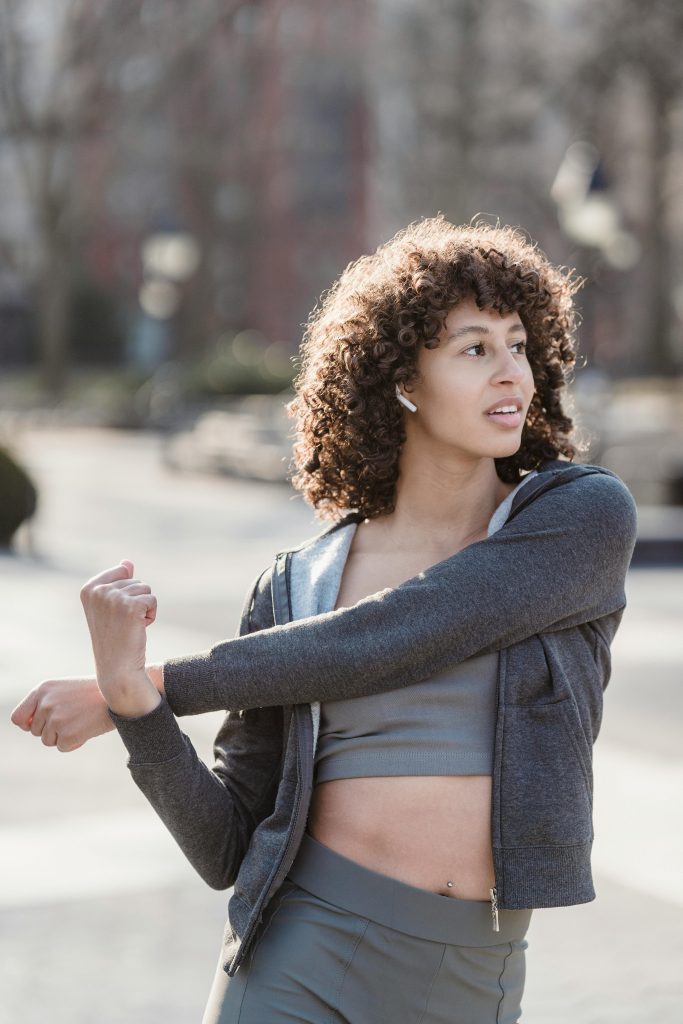So, you’ve been toying with the idea of running a 5K – maybe you downloaded Couch to 5K once upon a time, maybe you’ve been “meaning to start” since New Year’s Day, or maybe you’ve taken a little summer break and want something to focus on again. Here’s the good news: Late September / early October is the perfect time to go for it.
The air is cooler (no more melting mid-run), the parks and paths are full of those gorgeous autumn colours, and there’s still enough daylight left in the evenings to squeeze in training. Plus, there’s nothing like having a goal race before Christmas to keep your motivation ticking along.
You don’t need to be an elite athlete to run 5K. It’s one of the most beginner-friendly distances out there. Whether you’re starting completely from scratch, coming back after time off, or just want to tick a “first race” off your list, it’s totally doable in a matter of weeks.
This guide is here to hold your hand through the process: how to train smart (without injury), how to keep motivation high, and how to set yourself up to actually enjoy those miles. By the end, you’ll feel ready to pin on a number and cross that finish line feeling proud – I promise.

Why October is the Best Month for Beginners
There’s a reason so many beginners pick autumn to start:
- Cooler weather: You’re not battling the heat like in summer, which makes those first runs way more comfortable. Your body won’t overheat, and you can focus on enjoying the movement instead of dripping sweat in every direction.
- Plenty of time: You’ve got 6–8 weeks to train steadily, which is enough to build confidence, stamina, and a routine without rushing or risking injury.
- Season of routines: The back-to-school energy in October is contagious. Whether or not you have kids, it’s a great time to fall back into a rhythm, making it easier to create and stick to a running habit.
- Races still on the calendar: There are plenty of 5Ks happening before Christmas, but if you prefer something low-key, Parkruns are a brilliant option. They’re free, supportive, and a great way to get a taste of race day.
- Feel accomplished before the holidays: You don’t need to wait until January to set a “new year” goal. Starting now means you can see progress and feel like a different person by Christmas. It’s a fantastic confidence boost that carries over into all areas of life.
Step 1: Choose Your 5K Goal
Before you lace up, think about what your version of “success” looks like.
- For some, it’s about completing the distance – even if that means run/walking.
- For others, it might be running the whole way without stopping, or simply showing up to parkrun and finishing with a smile.
None of these goals are “better” than the others. They’re just different ways of celebrating the same achievement: covering 5 kilometres under your own steam.
My advice? Keep it simple. For your very first 5K, focus less on pace and more on consistency. Your main aim is to build a routine you’ll actually stick with, not to chase a PB straight away. Speed and endurance will come naturally later once you’ve got that base.
Remember: nobody at parkrun (or any race) cares about your time. They’ll just be cheering you for turning up, and that’s what really counts.
Step 2: Find a Beginner-Friendly Plan
You don’t need to wing it. A structured plan takes the guesswork out and stops you from doing too much, too soon.
Two great options:
- Couch to 5K – the classic. It’s simple, free and perfect if you’ve never run before. Three runs a week, gradually building up running intervals until you’re running the full distance.
- Runna – if you like having everything in one app (training, strength, mobility), this is a step up. It’s tailored to your fitness level, adjusts as you go, and can take you from complete beginner to beyond. (I’ve used Runna loads – my code RWR2 runs across all their plans, if you want to try it after Couch to 5K or jump straight in).
Pick one and stick with it. Honestly, the hardest part is starting!

Step 3: Gear Up (Without Spending a Fortune)
You don’t need loads of expensive kit to run your first 5K. But there are a few things that will make your runs way more enjoyable:
- Running shoes: the only non-negotiable. Head to somewhere like Decathlon for affordable options, or get fitted at a local running shop if you can. Outlet shops and Vinted have loads of good bargains!
- Sports bra: ladies, you’ll thank yourself. Sweaty Betty are my go-tos, but again, you don’t need to spend a fortune. Vinted is great for bargains and even places like Primark do a great range (look for high support).
- Optional extras: Comfy top, leggings/shorts you can move in, and maybe a watch or app to track your runs. Socks designed for running, a lightweight running jacket for chilly mornings, and reflective gear for dark evenings are worth considering too.
Keep it simple and don’t overthink. You can always upgrade as you go.
Step 4: Make It Fun
Here’s the secret to actually sticking with a beginner plan: it has to feel good. Some ideas:
- Create a 5K training playlist with songs that make you want to dance while you run.
- Find a buddy – even if you’re not running together, sharing your progress keeps you motivated.
- Schedule your runs like meetings, non-negotiable! Put them in your diary and treat them as important appointments with yourself.
- Reward yourself afterwards – a coffee, a podcast, or just a moment to sit and glow in your own smugness.
- Try different routes each week to keep things interesting. Exploring new parks, streets, or autumn trails can make your runs feel like mini adventures.

Step 5: Trust the Process
There will be runs that feel hard. That’s completely normal.
- Progress isn’t linear – Some weeks you’ll feel like a machine, others not so much. That’s fine (Ladies, this can also depend on where abouts you are on your cycle – check out my guide to running and your period for tips).
- Walking breaks are not cheating – They’re part of building endurance safely.
- Every step counts – Even if it’s slow, you’re still moving closer to your goal.
Mental tips: Celebrate small wins, track your progress in a journal or app and remind yourself why you started. This will help you stay motivated when runs feel tough.
Step 6: Make It Official
Having a date in the diary is the magic ingredient. Look up:
- A local 5K race in late December – some even have events on Christmans Day!
- A Parkrun (completely free, super supportive)
- Or even set your own “virtual 5K” with a friend
Having a finish line gives you accountability and something to celebrate at the end. Plus, it makes training feel purposeful rather than just a series of random runs.

What Happens After Your First 5K?
Here’s where the real fun begins. That post-5K glow will make you hungry for more, and it’s the perfect time to build momentum. You might choose to repeat your 5K plan but aim to run the whole distance, work on your speed (hello, PB chasing), or step up to a 10K with a progressive plan like Runna, which takes you seamlessly from beginner to intermediate.
The first 5K is just the start. If you finish your 5K in October and catch the running bug (it happens to the best of us), you might be wondering what’s next. That’s where apps like Runna come in. I used it for my marathon training and loved having a structured plan tailored to my pace and goals. They’ve got 5K, 10K and half marathon plans that grow with you – so once you’ve nailed this first milestone, you can keep the momentum going.
If you fancy trying it, you can use my code RWR2 for 2 weeks free – so you can have a go, see if you like it!
Feeling excited to get your first 5K under your belt? Don’t forget, a Parkrun is a brilliant way to make it official and join a super supportive community. Check out my Top Tips for Your First Parkrun post for everything you need to know to feel confident and enjoy the experience!


